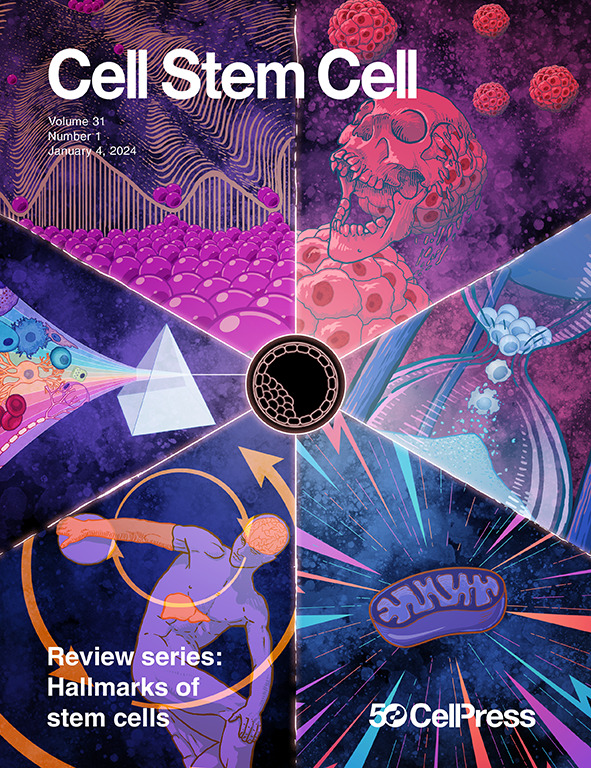Glycolytic activity instructs germ layer proportions through regulation of Nodal and Wnt signaling
IF 20.4
1区 医学
Q1 CELL & TISSUE ENGINEERING
引用次数: 0
Abstract
Metabolic pathways can influence cell fate decisions, yet their regulative role during embryonic development remains poorly understood. Here, we demonstrate an instructive role of glycolytic activity in regulating signaling pathways involved in mesoderm and endoderm specification. Using a mouse embryonic stem cell (mESC)-based in vitro model for gastrulation, we found that glycolysis inhibition increases ectodermal cell fates at the expense of mesodermal and endodermal lineages. We demonstrate that this relationship is dose dependent, enabling metabolic control of germ layer proportions through exogenous glucose levels. We further show that glycolysis acts as an upstream regulator of Nodal and Wnt signaling and that its influence on cell fate specification can be decoupled from its effects on growth. Finally, we confirm the generality of our findings using a human gastrulation model. Our work underscores the dependence of signaling pathways on metabolic conditions and provides mechanistic insight into the nutritional regulation of cell fate decision-making.

糖酵解活性通过调节Nodal和Wnt信号传导来指导胚层比例
代谢途径可影响细胞命运的决定,但它们在胚胎发育过程中的调节作用仍鲜为人知。在这里,我们证明了糖酵解活动在调节参与中胚层和内胚层规格化的信号通路中的指导性作用。利用基于小鼠胚胎干细胞(mESC)的体外胃形成模型,我们发现糖酵解抑制增加了外胚层细胞的命运,而牺牲了中胚层和内胚层细胞系。我们证明了这种关系是剂量依赖性的,从而可以通过外源葡萄糖水平对胚层比例进行代谢控制。我们进一步证明,糖酵解是 Nodal 和 Wnt 信号转导的上游调节因子,它对细胞命运规范的影响可以与其对生长的影响分离。最后,我们利用人类胃形成模型证实了我们研究结果的普遍性。我们的研究强调了信号通路对新陈代谢条件的依赖性,为细胞命运决策的营养调控提供了机理上的启示。
本文章由计算机程序翻译,如有差异,请以英文原文为准。
求助全文
约1分钟内获得全文
求助全文
来源期刊

Cell stem cell
生物-细胞生物学
CiteScore
37.10
自引率
2.50%
发文量
151
审稿时长
42 days
期刊介绍:
Cell Stem Cell is a comprehensive journal covering the entire spectrum of stem cell biology. It encompasses various topics, including embryonic stem cells, pluripotency, germline stem cells, tissue-specific stem cells, differentiation, epigenetics, genomics, cancer stem cells, stem cell niches, disease models, nuclear transfer technology, bioengineering, drug discovery, in vivo imaging, therapeutic applications, regenerative medicine, clinical insights, research policies, ethical considerations, and technical innovations. The journal welcomes studies from any model system providing insights into stem cell biology, with a focus on human stem cells. It publishes research reports of significant importance, along with review and analysis articles covering diverse aspects of stem cell research.
 求助内容:
求助内容: 应助结果提醒方式:
应助结果提醒方式:


